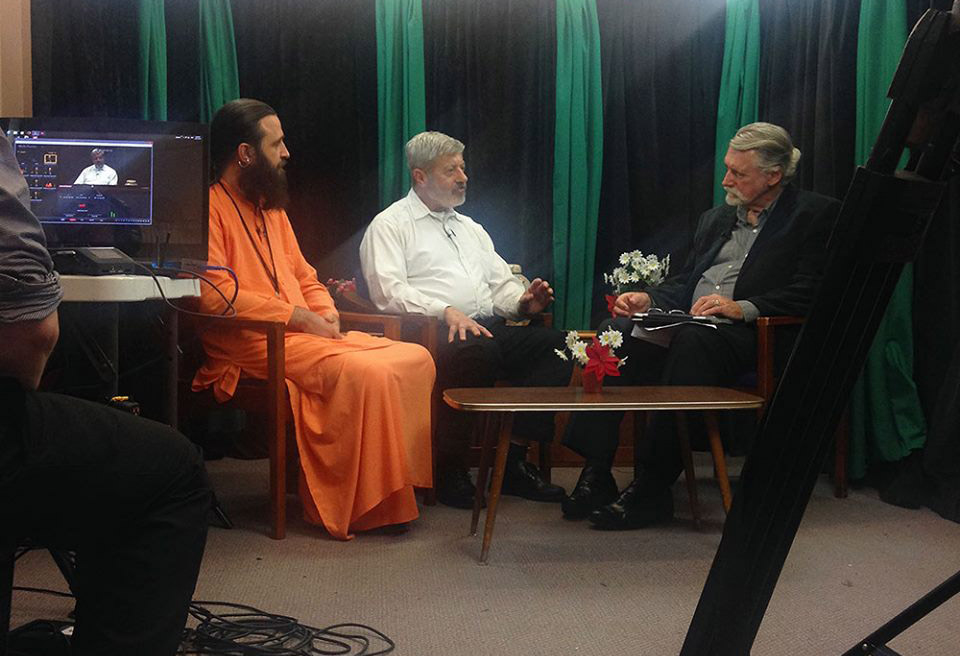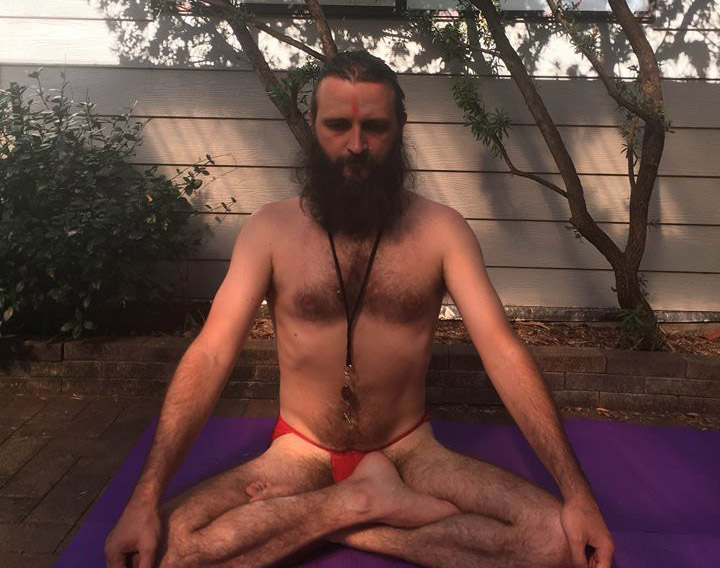Such elements as cakras, adharas, lakṣyas and vyomas are not always clearly described in the Natha texts and Tantras. Therefore, it is often necessary to use different texts for “complementarity.” There is another perfect way, the presence of a knowledgeable guru, who can explain everything and transmit it. However, it is extremely difficult to find such gurus. It is obvious from lots of texts that these elements of tantric yoga are transmitted to the disciple by a guru, who are realised in them. So, for example, the Pranatoshini-tantra (in the section of guru-tattva) describes these elements:
षट्चक्रं षोडशाधारं त्रिलक्षं व्योमपञ्चकम् |
स्वदेहे यो विजानाति स गुरुः कथितो बुधैः
ṣaṭcakraṃ ṣoḍaśādhāraṃ trilakṣaṃ vyomapañcakam |
svadehe yo vijānāti sa guruḥ kathito budhaiḥ ||
Six cakras, sixteen pillars, three goals (in yoga) and five vyomas are known (realised) in the body [of a disciple], that is connected with a guru.
Also, there are six streams or ways of opening of Paramashiva (षडध्वा ṣaḍadhvā) added to these elements. They play a big role in the tantric initiation (diksha), when the guru places them in the disciple’s body, awakens them in him, actually transmitting that he has realised already in himself. Therefore, a disciple adopts the psychophysical realisation of his guru. A disciple must perceive the transmission of these elements from the guru as the very revealing of Shiva. The revealing of Shiva, who is vācaka (expressing speech) and vācya (expressed) – Shakti. They are both revealed on three levels: the higher – parā (or abheda – apart from the differences), parāpara – the combination of the higher and the lower or the bhedābheda (one in discrimination) and apara – the lowest or bheda (separate). At the highest level, Shiva manifests as varṇa (the Sanskrit letters), and Shakti – as kalā (the five forms of primordial energy). At the parāpara level, Shiva manifests as a mantra and Shakti at the same level – as tattva, one of the 36 elements of Shaivism. At the level of apara, Shiva manifests himself as a pada (words) and Shakti appears as bhuvana (worlds). In a word, the entire manifested universe is the expression of the union of Shiva–Shakti. The shadadhvas are used in many practices, one of the well-known examples can be found in the Vijñāna-bhairava-tantra (Shloka 56), they are also mentioned in the Amaraugha-shasana by Gorakshanāth in the context of prāṇa movement and the awakening of kuṇḍalinī–shakti.
Regarding the remaining elements, the Pranatoshini-tantra gives the following explanations:
पृथिव्यादीनि भूतानि कथितं व्योमपञ्चकमिति
pṛthivyādīni bhūtāni kathitaṃ vyomapañcakamiti
Starting from the ground, the five elements are known as the five vyomas. The Tantrāloka (Ahnika 29, Shloka 252) says about five centers, where the five vyomas manifest:
व्योमानि – जन्मनाभिहृद्विन्दुस्थानानि
vyomāni – janmanābhihṛdvindusthānāni
The following are connected with the vyomas: 1) janma-sthāna (mūlādhāra), 2) nābhi (maṇipūra), 3) hṛdaya (anāhata), 4) bindusthāna (usually, bhrūmadhya or ājñā) and 5) sahasrāra. Obviously, the earlier system of the five cakras, known in the Kubjikā-tantras for examples, corresponds to the yogic experience of five spaces. Although they are described differently in the Upaniṣadas (the Maṇḍalabrāhmaṇa-upaniṣad, the Advaya-taraka-upaniṣad) or in the Siddha-siddhānta-paddathi.
The Pranatoshini-tantra gives explanations of the three lakṣyas:
त्रिलक्षादिकमपि तत्रैव स्वयम्भूर्वाण इतरस्त्रिलक्षं परिकीर्त्तितम्
trilakṣādikamapi tatraiva svayambhūrvāṇa itarastrilakṣaṃ parikīrttitam
The three goals of meditation are known as svayambhū (liṅga), vana and itara (liṅgamas).
Six cakras are described similarly to many texts, but in the Pranatoshini-tantra they being reunited with the dvādaśānta system (subtle centers and spaces in the head area), give 16 adharas in total.
षोडशाधारस्वरूपमपि तत्रैव ||
मूलाधारस्वाधिष्ठानं मणिपूरमनाहतम् |
विशुद्धमाज्ञाचक्रञ्च बिन्दुर्भूयः कलापदम् |
निबोधिका तथार्द्धेन्दुर्नादो नादान्त एव च |
उन्मनी विष्णुवक्त्रञ्च ध्रुवमण्डलिका ततः |
ṣoḍaśādhārasvarūpamapi tatraiva ||
mūlādhārasvādhiṣṭhānaṃ maṇipūramanāhatam |
viśuddhamājñācakrañca bindurbhūyaḥ kalāpadam |
nibodhikā tathārddhendurnādo nādānta eva ca |
unmanī viṣṇuvaktrañca dhruvamaṇḍalikā tataḥ |
In addition to the cakras, from mūlādhāra to ājñā, there are listed bindu, kalā, pada, nibodhika, ardhendu, nada, nādānta, unmaṇi, viṣṇuvaktra, dhruvamaṇḍala.
In fact, this is a unified psychophysical system of the yogin including also the macrocosm.
In some texts, adharas are described as granthas (nodes of the energy connections), for example, in the Manthanabhaira-tantra, in others – as marmas (in the Yoga Yājñavalkya). In the last text, these marmas are used in the practice of pratyāhāra, in which, through the concentration of the mind, a yogi learns to collect his prāṇa scattered throughout the body. The term “marma” is found in Āyurveda, in Indian martial arts and comes from the root of mṛ meaning “death”, since the points were used to defeat the enemy. In these systems, marmas are numerous, and they are localised at the junction of different body systems, etc. Nevertheless, the points can play a healing function, so the mṛta (death) becomes an amṛta (life) or a path from mara to amara (immortality).
All these details in their entirety at the applied level can be transferred to the disciple only by a guru, who, without any doubt, must realise them in the most perfect form in himself.








